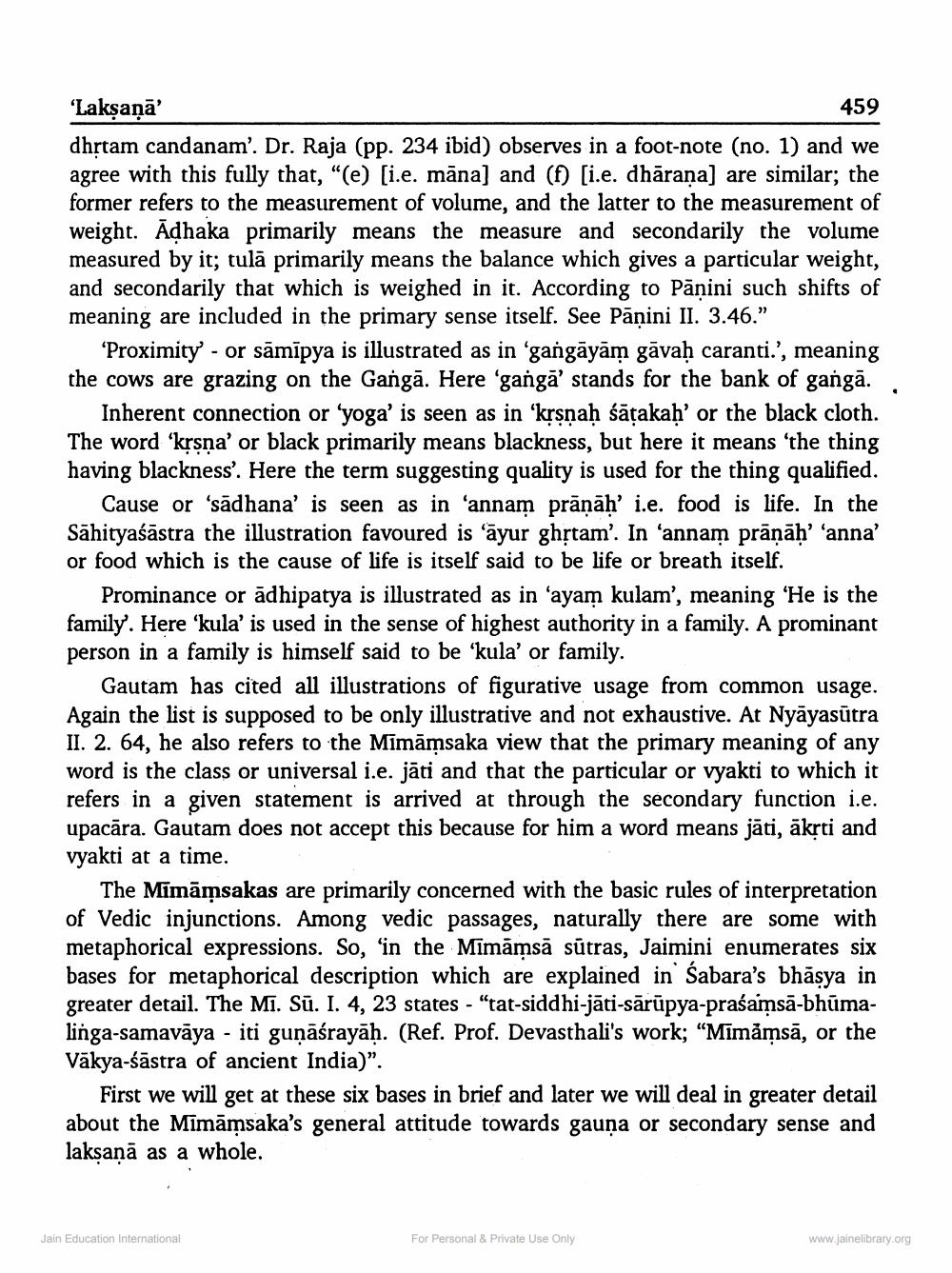________________
'Lakṣaṇā'
459
dhṛtam candanam'. Dr. Raja (pp. 234 ibid) observes in a foot-note (no. 1) and we agree with this fully that, "(e) [i.e. māna] and (f) [i.e. dhāraṇa] are similar; the former refers to the measurement of volume, and the latter to the measurement of weight. Aḍhaka primarily means the measure and secondarily the volume measured by it; tula primarily means the balance which gives a particular weight, and secondarily that which is weighed in it. According to Panini such shifts of meaning are included in the primary sense itself. See Panini II. 3.46."
'Proximity' - or sāmīpya is illustrated as in 'gangāyām gāvaḥ caranti.', meaning the cows are grazing on the Gangā. Here 'ganga' stands for the bank of gangā.
Inherent connection or 'yoga' is seen as in 'kṛṣṇaḥ śāṭakaḥ' or the black cloth. The word 'kṛṣṇa' or black primarily means blackness, but here it means 'the thing having blackness'. Here the term suggesting quality is used for the thing qualified.
Cause or 'sadhana' is seen as in 'annam prāṇāḥ' i.e. food is life. In the Sahityaśāstra the illustration favoured is 'ayur ghṛtam'. In 'annam prāṇāḥ' 'anna' or food which is the cause of life is itself said to be life or breath itself.
Prominance or adhipatya is illustrated as in 'ayam kulam', meaning 'He is the family'. Here 'kula' is used in the sense of highest authority in a family. A prominant person in a family is himself said to be 'kula' or family.
Gautam has cited all illustrations of figurative usage from common usage. Again the list is supposed to be only illustrative and not exhaustive. At Nyāyasūtra II. 2. 64, he also refers to the Mimāmsaka view that the primary meaning of any word is the class or universal i.e. jāti and that the particular or vyakti to which it refers in a given statement is arrived at through the secondary function i.e. upacara. Gautam does not accept this because for him a word means jāti, ākṛti and vyakti at a time.
The Mimāmsakas are primarily concerned with the basic rules of interpretation of Vedic injunctions. Among vedic passages, naturally there are some with metaphorical expressions. So, in the Mimāmsā sūtras, Jaimini enumerates six bases for metaphorical description which are explained in Sabara's bhāṣya in greater detail. The MI. Sū. I. 4, 23 states - "tat-siddhi-jāti-sārūpya-praśamsā-bhūmalinga-samavāya - iti guṇāśrayāḥ. (Ref. Prof. Devasthali's work; "Mimāmsā, or the Väkya-śāstra of ancient India)".
First we will get at these six bases in brief and later we will deal in greater detail about the Mimāmsaka's general attitude towards gauna or secondary sense and lakṣaṇā as a whole.
Jain Education International
For Personal & Private Use Only
www.jainelibrary.org




